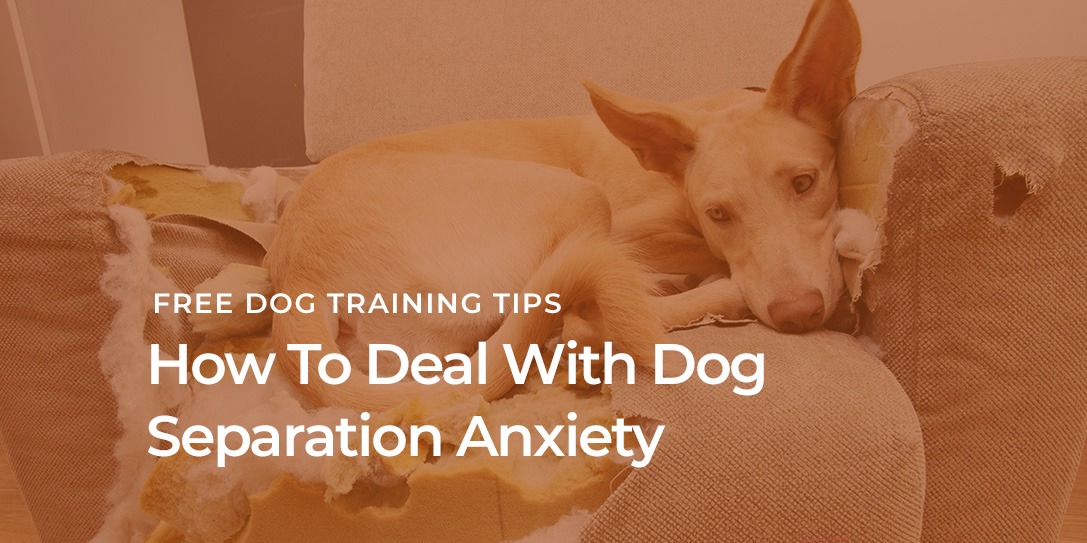
10+ Helpful Tips for How To Deal With Dog Separation Anxiety
If Fido shows some of the classic separation anxiety symptoms in dogs whenever you reach for your shoes, you’ll want to know how to deal with dog separation anxiety.
Dogs are known for their loyalty and companionship, but what happens when they start to get anxious when you leave them alone? This is a common problem known as separation anxiety. But don’t worry, there are ways that you can help your furry friend deal with this issue. Keep reading to learn more about how to deal with dog separation anxiety, common dog separation anxiety symptoms, what causes separation anxiety in dogs, how to prevent dog separation anxiety, signs of separation anxiety in dogs, and separation anxiety dog training near you.
Separation Anxiety Symptoms in Dogs and How To Spot Them
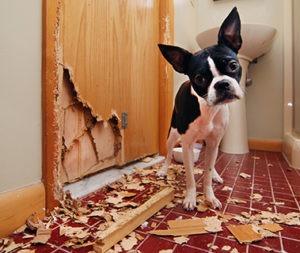 Dog separation anxiety can be a problematic condition in loving pet owners. Typical signs of occasional separation anxiety include barking, whimpering, howling, trying to escape the house or yard, or destructive behaviors. Still, anxiety can pose a significant challenge for pets and their owners when it becomes severe.
Dog separation anxiety can be a problematic condition in loving pet owners. Typical signs of occasional separation anxiety include barking, whimpering, howling, trying to escape the house or yard, or destructive behaviors. Still, anxiety can pose a significant challenge for pets and their owners when it becomes severe.
To identify how to deal with dog separation anxiety, it is essential first to understand how to spot the symptoms. The key signs of clinical separation anxiety in dogs include:
- Anxious panting
- Destroying objects in the house out of frustration
- Howling
- Pacing back and forth
- Refusal to eat or loss of appetite
Other subtle symptoms may include excessive licking and whining when you leave the room or try to leave your home altogether. If you notice your pup exhibiting any combination of these behaviors regularly, it may be time to consult your vet about managing their stress. With the proper love and attention—not to mention plenty of physical exercises and proper training—your pup can learn how to better cope with their fears!
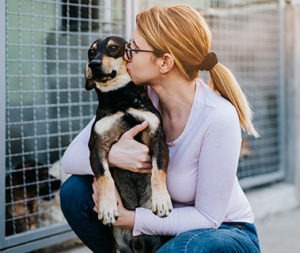 What Causes Separation Anxiety in Dogs
What Causes Separation Anxiety in Dogs
Separation anxiety in dogs is a common problem among owners that can cause substantial distress and frustration. The root cause of dogs’ separation anxiety is complex and multifaceted. Still, it commonly stems from the lack of proper training, situational changes within the household, health problems, or abandonment.
Dogs will often display howling, barking, and crying when left alone, which is a direct sign of distress stemming from their insecurity. This feeling can also be exacerbated if an owner gives too much attention to their pet at home and then neglects them once they go out. As a result, owners must create routines for pets to help them adjust positively to being alone or in less familiar environments. Proper training is also essential in helping a dog understand that being away from their owner does not always bring negative connotations.
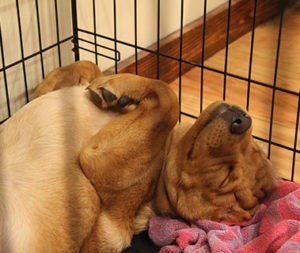 How To Deal With Dog Separation Anxiety
How To Deal With Dog Separation Anxiety
It is possible to create a positive association with being away from your pup by following simple practices. Start small, getting used to being out of the house for short periods of time while leaving your dog alone indoors. Reward them with small treats upon returning or offer them a special toy to play with during the time away so that they associate positive behavior when left alone.
You can also plan activities where you spend more time together before leaving, such as playtime or a training session, and then part ways on a high note. Lastly, how you feel when going can play an important role in how your dog reacts—staying calm and confident will help prevent distress and separation anxiety. Following these steps, pet parents and their furry friends can build healthy habits that help create positive associations when apart.
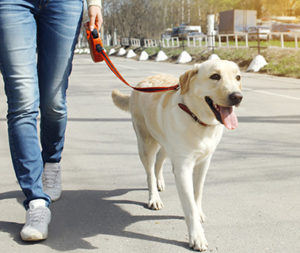 How To Prevent Dog Separation Anxiety
How To Prevent Dog Separation Anxiety
Treatment options are available to help bring your furry friend some much-needed calm. Providing plenty of companionship and positive experiences is important to distract your pup from feeling anxious when alone. A few change-of-pace activities that you could try include:
- Having play dates with other doggy friends
- Short grocery store visits with your pup
- Taking them on more trainer-rated walks around the neighborhood
Regular exercise often helps reduce pets’ anxiety and provides an outlet for their energy. Providing comfort items such as toys or blankets can help reduce fear levels as these objects can help remind the dog of its owner’s presence even when apart. Through implementing all these steps, owners can support their beloved pet and make strides towards successfully reducing separation anxiety in their dog.
If the symptoms persist, consider consulting a dog trainer, behavior specialist, or veterinarian who can offer advice tailored to your dog’s specific needs. With patience and dedication, it is possible to turn things around and help manage how to deal with your pet’s separation anxiety in a caring manner.
Separation Anxiety Dog Training Near Me
Pet owners can use several separation anxiety dog training techniques to help their pup overcome this issue. To start, regularly exposing the dog to shorter periods of separation is important. Start by leaving them alone for five minutes at a time and gradually increase your time away from your pet until they become used to it. Positive reinforcement can also be an effective tool in managing separation anxiety. Make sure to reward your pup with treats or praise whenever they stay quiet while alone.
If you’re feeling overwhelmed, consider hiring a professional trainer. Dog trainers offer specialized separation anxiety dog training that can help you quickly teach your pup how to cope with being left alone safely and comfortably. With patience and consistency, your pooch will learn how to stay calm when apart from you and enjoy more stress-free moments together!
How to deal with separation anxiety
If your dog is suffering from separation anxiety, there are several things you can do to help them feel better. First, it’s important to understand the symptoms and root causes of the condition. Then, you can begin working on creating a positive association with being away from your dog. Training techniques such as counterconditioning and desensitization can also help overcome separation anxiety. If you implement these suggestions, you should see an improvement in your dog’s anxiety levels over time.
Googling “separation anxiety dog training near me?” At Dog Gone Amazing, we believe that every dog deserves a chance to learn, and we know that every dog has the potential to be amazing! Click here to learn more about the types of dog training in Reno that we offer.
